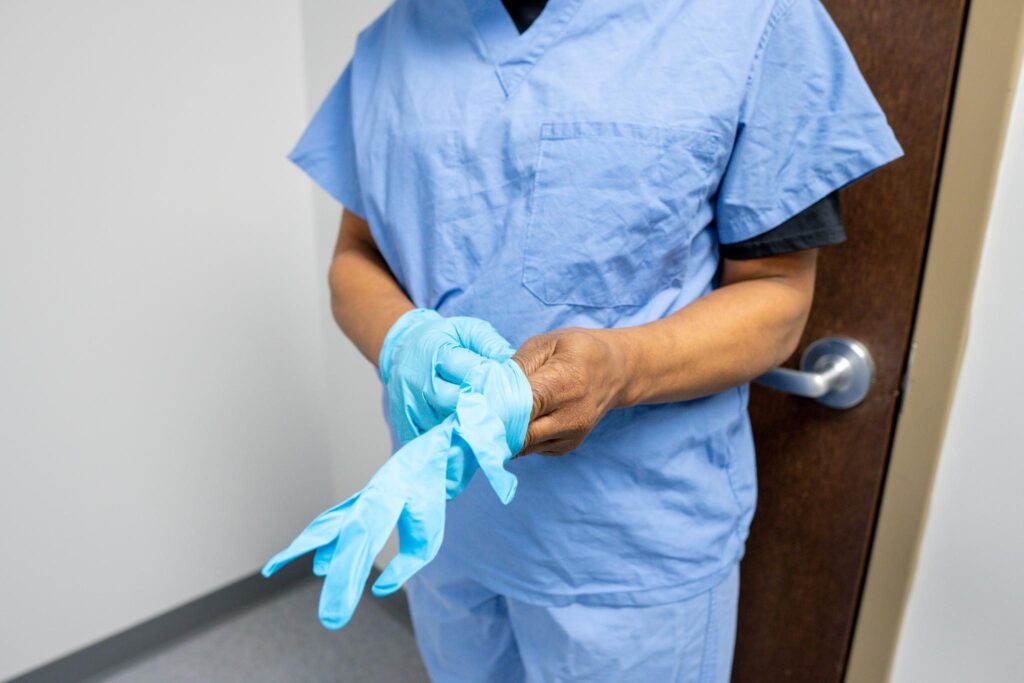Cross-contamination in healthcare facilities is a serious issue, as it can lead to hospital-acquired infections (HAIs) that could easily be prevented. Still, the Centers for Disease Control and Prevention (CDC) estimate that about one in 31 patients and one in 43 nursing home residents will contract at least one HAI in a healthcare facility. This can lead to complications with treatment, financial burdens, and a growing amount of physical, mental, and emotional stress. While healthcare workers do what they can to help reduce the risk of HAIs in the facility, cross-contamination makes things difficult. For additional help, consider some tips on cross-contamination prevention in healthcare facilities.
What is Cross-Contamination?
Cross-contamination refers to any instance where bacteria, pathogens, viruses, or any other type of microorganism is transferred from one object or person to another object or person. It’s essentially the assisted movement of germs throughout an environment. For example, if you were to cough and cover your mouth with your hand, then touch a doorknob, you’ve contributed to cross-contamination of that doorknob. A cross-contamination prevention technique here would be to cough into your inner elbow or wash your hands immediately after coughing into them.
Within any given healthcare facility, the risk of cross-contamination exists. It can happen in the hospital kitchen, bathrooms, hallways, patient rooms, and especially in waiting rooms. Nurses, doctors, and surgeons do their best to help prevent it, but patients may not have the same understanding—especially when they’re feeling weak or ill.
8 Ways to Prevent Cross-Contamination in Healthcare Settings
While cross-contamination is common, it can be prevented. To help, consider some of the most effective techniques used to prevent cross-contamination in healthcare facilities.
1. Educate Staff on Infection Control
One of the most important steps in preventing cross-contamination in healthcare facilities is to make sure that your staff is properly educated on infection control. Everyone should be able to identify common infections in patients to help reduce the risk of transmission from the moment they enter the waiting room. Further education on handling biohazardous materials and potential bloodborne and airborne pathogens is also recommended.
2. Provide Personal Protective Equipment
It’s also important to provide personal protective equipment (PPE) to staff and patients who need it. This could include using masks for individuals with respiratory conditions such as COVID-19, gloves for staff when examining patients with undiagnosed conditions, safety glasses, masks, and even gowns. Each situation is often unique, but there are certain times when PPE should be worn as a preventative measure. Make sure that everyone knows when PPE is needed and what type works best for each situation.
3. Optimize Air Quality
According to several studies, there’s sufficient evidence that poor indoor air quality mixed with contaminated surfaces provides a greater risk of transmitting pathogens in healthcare facilities. Therefore, to support the health and safety of everyone in your facility, it’s important to also focus on optimizing air quality. This means regularly cleaning the ductwork and ventilation system to avoid cross-contamination from vents to each room in your facility. It should also include changing filters regularly and ensuring that the air treatment equipment effectively filters microorganisms in healthcare environments.
4. Use the Right Cleaning Supplies and Protocols
There’s a significant difference between cleaning, sanitizing, and disinfecting. Each uses different cleaning supplies and protocols, but not all eradicate germs and bacteria. To effectively reduce the risk of cross-contamination, it’s important that you use the right supplies for disinfecting surfaces to kill germs and get rid of them for good. This often means using microfiber cloths to remove dirt or debris, then applying hospital-grade disinfectants to kill those left on surfaces. New clothes should be used for each area to help further reduce the risk of cross-contamination.
5. Create an Infection Control Policy
The pandemic taught us the importance of having policies and protocols to follow in times of emergencies. Apply the same mentality to your healthcare facility’s infection control. Create a plan so that individuals have guidelines to follow to further reduce the transmission of HAIs. This can include properly disposing of hazardous waste, regularly washing hands, and understanding what PPE should be worn and when. Write it down, distribute it, and keep it on display to reinforce the idea.
6. Regularly Clean and Disinfect Surfaces
Although this seems obvious, it needs to be said—regularly cleaning and disinfecting surfaces is one of the most effective ways to prevent cross-contamination. You can hire a professional cleaning company to target high-touch points throughout the day for the best cross-contamination prevention.
7. Reduce Patient/Visitor Contamination
Patients also unknowingly contribute to cross-contamination in healthcare settings. While you can’t control everything they do, you can set some rules to help reduce the risk. For one, don’t allow patients to walk around the medical facility without shoes. Slippers or non-slip socks should be worn and removed upon re-entering their beds. You may also consider having separate waiting rooms for patients and visitors. This can help ensure that visitors aren’t close to multiple sick individuals, which can result in cross-contamination within the community.
8. Encourage Healthy Hygiene Habits
Hand washing is one of the easiest, most effective ways to prevent cross-contamination in a healthcare facility. However, not everyone does it, and those who do may not be washing their hands long enough. Encourage healthy hygiene habits by placing sanitation machines throughout the facility and posting handwashing guides in the bathroom.
9. Schedule Regular Deep Cleanings and Professional Disinfection
Finally, you need to schedule regular deep cleanings and professional disinfection to truly take control of infection prevention. Professional companies like Bee Line understand what it takes to clean for cross-contamination prevention in healthcare facilities and can drastically reduce the risk of HAI transmission when used strategically. It’s an investment that’s worth every penny.
Cross-contamination can cause some serious problems, but when you partner with Bee Line, we’ll take over the heavy lifting. There’s a reason that top healthcare networks across the Midwest count on us for all of their commercial cleaning needs.
As the region’s leading medical-grade cleaning company, we understand what it takes to apply commercial cleaning best practices to surgical sites, patient rooms, exam suites, and other healthcare facilities. We even have our in-house medical exam suite and bathroom that precisely mimics a real-life exam room’s dimensions, equipment, design, and functionality. That way, we can train and test our cleaners, management, and leadership to ensure that everyone knows what it takes to thoroughly clean and disinfect an area and reduce the risk of cross-contamination.
Bee Line is a professional cleaning company specializing in medical facility cleaning services. In addition to our hospital cleaning services, we also offer comprehensive operating room and surgical cleaning to ensure your facility is disinfected regardless of the time of day.
When you’re ready to find out why America’s largest healthcare networks put their trust in Bee Line, we’ll be here. Our team will ensure every square inch of your medical facility is cleaned and ready to go. To learn more about our process, reach out to a team member at Bee Line by calling 312-BEE-LINE or filling out our contact form online.
About The Author
Tom Klimaszewski
author
Tom is your go-to-guy for any health and safety concerns on-site! Tom has lots of experience as a Safety and Compliance Manager in commercial cleaning, healthcare, office, airport settings, with his education in Environmental Studies. He has earned his Certificate Mastery in Infection Prevention (CMIP) and Trainer for Certified Surgical Cleaning Technician (T-CSCT), so to say he’s knowledgeable would be an understatement. When he’s not combatting germs, you can find Tom painting, writing songs, hiking, fishing, and belting out his favorite tunes at karaoke! His favorite part of working with Bee Line is the collaborative and supportive environment.




